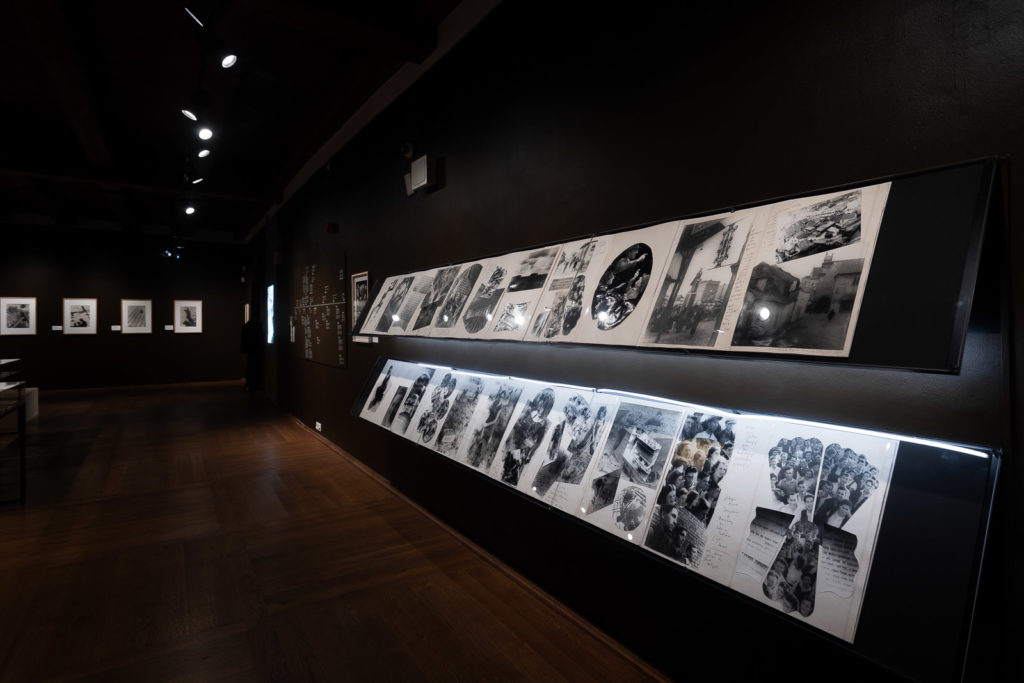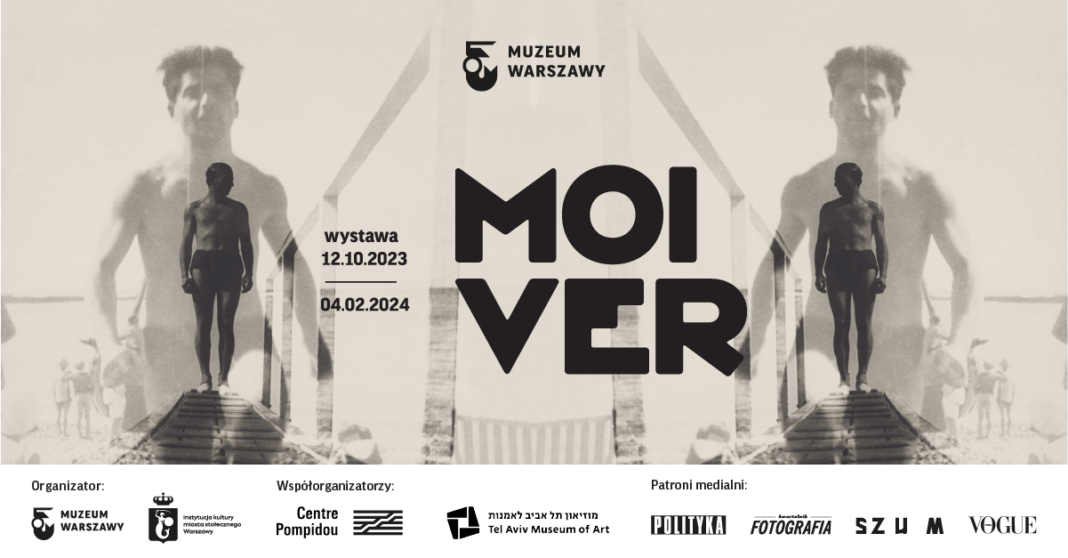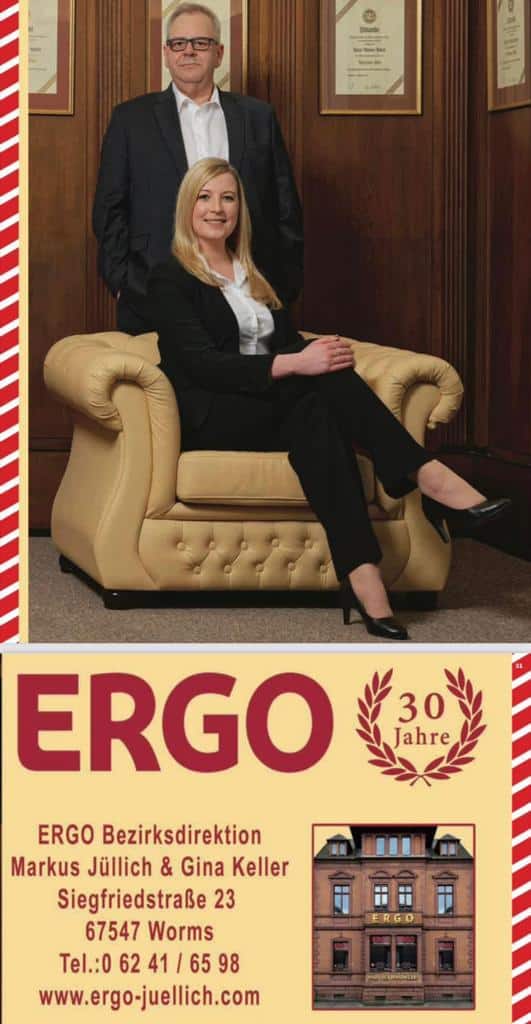The exhibition devoted to the life and work of Moshe Vorobeichic—a photographer, graphic artist and painter who belonged to the forefront of the 1920s European avant-garde—has arrived in Warsaw straight from Centre Pompidou in Paris. A graduate of the Bauhaus School, Vorobeichic was active in Paris where he adopted the pseudonym Moi Ver. He returned to his native Vilna and Poland many times. During these visits, he photographed the Jewish world which would soon cease to exist. In the Moi Ver exhibition, we present a total of 300 photographs, posters, publications, design projects of books, paintings and documents. Thanks to years of research in the artist’s archive, Polish audience will have an opportunity to admire for the first time the rich and versatile oeuvre of Moshe Vorobeichic who is considered one of the most distinguished avant-garde photographers in France. After Paris and Warsaw, the exhibition will travel to Tel Aviv. The opening of Moi Ver exhibition at the Museum of Warsaw will take place on 12 October.

Moshe Worobejczyk, Moi Ver, Moshe Vorobeichic, Moshe Raviv…
…is one and the same person. A Jew from East-Central Europe, a Zionist, born in 1905 in the territory of today’s Belarus, bred in Vilna; a citizen of the Second Republic of Poland who studied in the Weimar Republic and in Paris. Moï Ver was a versatile artist, a disciple of Fernand Léger and László Moholy-Nagy. In his art, he combined an innovation of form with social sensitivity and political commitment. He employed the language of the avant-garde in his photography and graphic art. His visionary and uncompromising projects devoted to the Jewish quarter in Vilna, to Paris or to kibbutzim in Poland or in Palestine are a true manifest of his world-view. In the 1920s and 1930s, Vorobeichic took over 1,500 photos of traditional Jewish communities in towns and cities of Poland and in the vicinity of Warsaw. A broad selection of hitherto unpublished and scattered photographs will be available for viewing for the first time at the Museum of Warsaw.

From Vilna to Paris via Bauhaus
The exhibition will present Vorobeichic’s life and work starting from his first big project, namely a series of over 200 photographs devoted to the Jewish quarter in Vilna. It is the most comprehensive, cohesive and touching photographic documentation of this place that is known to exist. The photographs were taken soon after Vorobeichic had completed his studies at Bauhaus, the most progressive school of architecture and design. At Bauhaus, photography as well as photomontage and collage were regarded as novel tools of artistic expression. In 1929, Vorobeichic moved to Paris where, aside from taking painting lessons with Fernand Léger, he attended the Technical School of Photography and Cinematography. His design projects for photographic books titled Paris (1931) and Ci-Contre (1931) are amongst the biggest achievements of world avant-garde photography. For Vorobeichic, photography was also a source of livelihood—he joined the Photoglobe agency and published in both French and Polish illustrated press. He never stopped travelling back to Poland and taking photos of Jewish culture and everyday life of local Jewish communities.

Polin – a glimpse at the world which is no more
In the years 1929-1937, Vorobeichic took a total of over 1,500 photos of traditional Jewish communities in towns and cities of Poland, including small towns in the vicinity of Warsaw. The artist was also interested in Polish countryside and above all its residents—Poles and Jews, and the relations between them. He photographed market squares and genre scenes; he took tightly framed, unposed street portraits of bearded Jews and of Polish peasants. Polin is a truly comprehensive and original collection of photographs documenting the daily life of Jews in East-Central Europe. The artistic quality of the photographs is exceptional, too, and their aesthetics is strikingly modern. They are much more than mere documentary photography.
Vorobeichic also photographed hakhsharot, i.e. places where the Jewish youth in Europe prepared to emigrate to Palestine by working in the field as well as by taking lessons of Hebrew and geography of the region. In Poland of the late 1930s, there were about two hundred such places, the highest number in Europe. The largest hakhsharah was located in Grochów, a district of Warsaw. Vorobeichic visited almost twenty hakhsharot and took over 500 photographs of young people at work, while studying or resting. They all testify to their zeal, cooperation and engagement. The photos were then included in publications which propagated the ideals and operation of the hakhsharot.

Palestine—a new country
Having emigrated to Palestine in 1934, Vorobeichic worked for local Zionist organisations. He took hundreds of reportage photos showing the construction of Tel Aviv as well as documenting the life of pioneers in the kibbutzim. He designed posters, information expositions and illustrated publications using his own photo-montages.
In 1951, Vorobeichic changed his name to Moshe Raviv. In 1953, he settled in the town of Safed in northern Israel where he joined an art colony. He abandoned photography altogether and instead returned to painting and drawing. His paintings draw on the Kabbalah, mystical writings, Hasidism and Jewish folklore, even if references to his years at the Bauhaus can be traced in his late works, too.
A unique exhibition of avant-garde photography
“Moi Ver is one of the masters of 20th-century avant-garde photography—one of the forgotten ones, who are only now being rediscovered,” says Karolina Ziębińska-Lewandowska, the exhibition curator, who has been researching Moshe Vorobeichic’s artistic output for years now. “We rarely get an opportunity here in Poland to admire such high-quality photography from the interwar period. This exhibition reveals to us the oeuvre of an artist endowed with extraordinary talent and fascinating biography. It is truly worthwhile to take a look at Vilna, Paris, Warsaw, Polish towns and Palestinian-Israeli kibbutzim through a radical eye of Vorobeichic’s camera.”
Part of the commemoration of the 80th anniversary of the outbreak of the Warsaw Ghetto Uprising
Moi Ver exhibition presents the work of an artist who was a Polish citizen until 1939, a Zionist who used his photographic output to support Jewish youth in their efforts to emigrate to Palestine. The Museum of Warsaw is dedicated to the history a city whose pre-WW2 population consisted of 30% Jews. That is why we gradually introduce subjects related to pre-war Warsaw’s largest minority to our exhibitions and publications. The commemoration programme is available at: www.warsaw1943.pl.
Moi Ver exhibition is organised by Centre Pompidou in cooperation with the Museum of Warsaw and Art Museum in Tel Aviv. The exhibition was open for viewing at Centre Pompidou from 20 April until 29 August 2023.
Moi Ver exhibition will be available for viewing at the Museum of Warsaw at 32 Old Town Square between 12 October 2023 and 4 February 2024. The Museum is open on Tuesdays, Wednesdays and Fridays from 9AM until 5PM, on Thursdays from 9AM till 7PM, and on Saturdays and Sundays from 11AM till 6PM. Tickets: 20PLN/15PLN, on Thursdays admission is free.
For more information on the exhibition and the accompanying program, please go to: www.muzeumwarszawy.pl/en/wystawa/moi-ver.



